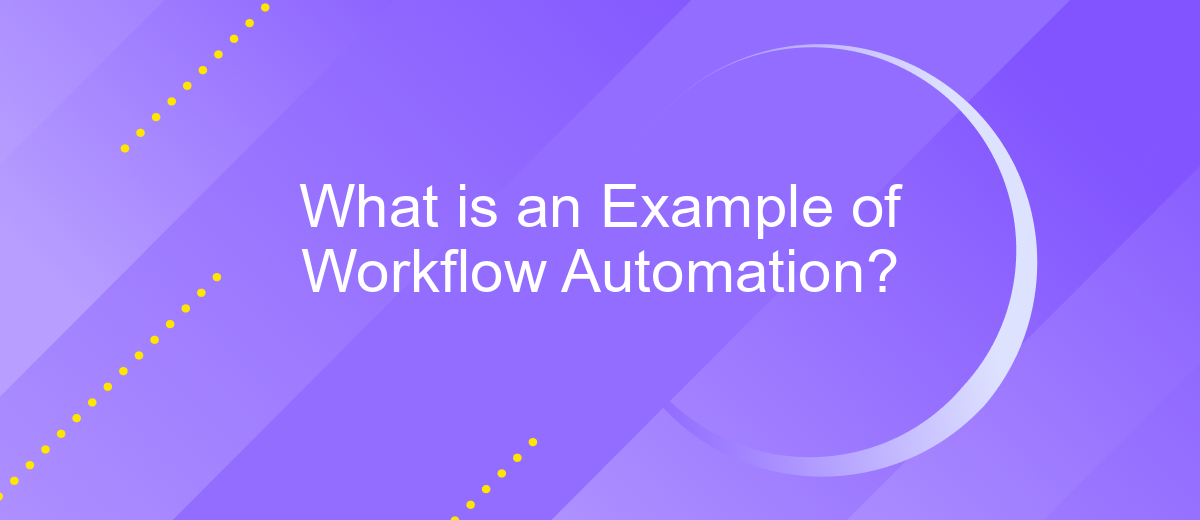What is an Example of Workflow Automation?
Workflow automation refers to the use of technology to streamline and automate repetitive tasks and processes within a business. By implementing workflow automation, organizations can enhance efficiency, reduce errors, and free up valuable time for employees to focus on more strategic activities. This article explores practical examples of workflow automation, demonstrating how it can transform daily operations and drive productivity.
What is Workflow Automation?
Workflow automation refers to the use of technology to streamline and automate repetitive tasks and processes within a business. By implementing workflow automation, organizations can enhance efficiency, reduce human error, and free up employees to focus on more strategic activities.
- Eliminates manual tasks
- Reduces operational costs
- Improves process consistency
- Enhances productivity and efficiency
One of the key aspects of workflow automation is the integration of various software and tools to create a seamless workflow. Services like ApiX-Drive facilitate this by enabling businesses to connect different applications without the need for complex coding. This integration capability ensures that data flows smoothly between systems, further optimizing the automated processes.
Benefits of Workflow Automation

Workflow automation offers numerous benefits that can significantly enhance business operations. One of the primary advantages is increased efficiency. By automating repetitive and time-consuming tasks, employees can focus on more strategic activities that require human intervention, thereby improving overall productivity. Automation also reduces the likelihood of human error, ensuring tasks are completed accurately and consistently.
Another key benefit is the seamless integration of various tools and systems. Services like ApiX-Drive enable businesses to connect different applications effortlessly, streamlining data flow and communication across platforms. This not only saves time but also enhances data accuracy and accessibility. Additionally, workflow automation provides better visibility and control over processes, allowing managers to monitor progress in real-time and make informed decisions quickly. Overall, implementing workflow automation can lead to cost savings, improved employee satisfaction, and a more agile business environment.
Types of Workflow Automation

Workflow automation encompasses various types that streamline and enhance business processes. Understanding these types can help organizations choose the right tools and strategies for their specific needs.
- Task Automation: This involves automating repetitive tasks such as data entry, email responses, and report generation. Tools like ApiX-Drive can integrate different software applications to automate these tasks seamlessly.
- Process Automation: This type focuses on automating entire business processes, such as order processing or customer onboarding. By using workflow management systems, companies can ensure consistency and efficiency.
- Integration Automation: By integrating various software systems, businesses can automate data transfer and synchronization. Services like ApiX-Drive facilitate these integrations, enabling smooth data flow between platforms.
- Approval Automation: This type automates the approval process for documents, requests, or tasks, reducing bottlenecks and speeding up decision-making.
By leveraging these types of workflow automation, businesses can significantly reduce manual effort, minimize errors, and improve overall productivity. Choosing the right automation tools, such as ApiX-Drive, can further enhance these benefits by providing seamless integrations and efficient task management.
Examples of Workflow Automation

Workflow automation streamlines repetitive tasks and enhances efficiency in various industries. By automating routine processes, businesses can save time, reduce errors, and improve productivity. This approach is beneficial for tasks ranging from simple administrative duties to complex operational workflows.
One common example of workflow automation is email marketing campaigns. Automated systems can send personalized emails to customers based on their behavior or preferences, ensuring timely and relevant communication. Another example is customer support, where chatbots can handle common queries, freeing up human agents for more complex issues.
- Automated email marketing campaigns
- Customer support chatbots
- Invoice processing and payment reminders
- Employee onboarding processes
- Data synchronization between applications
For businesses looking to integrate different applications seamlessly, services like ApiX-Drive can be invaluable. ApiX-Drive allows users to connect various apps and automate data transfer without requiring coding skills. This integration capability ensures that all systems work harmoniously, further enhancing workflow automation and operational efficiency.
How to Implement Workflow Automation
To implement workflow automation, start by identifying repetitive tasks that consume significant time and resources. Evaluate your current processes and pinpoint areas where automation can bring the most benefits. Once identified, map out each step of the workflow to understand the sequence of actions and decision points. This mapping will serve as a blueprint for your automation efforts.
Next, choose the right tools and software to automate these tasks. Platforms like ApiX-Drive can facilitate seamless integration between various applications, ensuring data flows smoothly across different systems. Configure the automation tools to handle tasks such as data entry, notifications, and report generation. Test the automated workflows thoroughly to ensure they function as intended. Regularly monitor and refine the processes to adapt to changing needs and improve efficiency over time.
FAQ
What is workflow automation?
Can you give an example of workflow automation?
How can workflow automation benefit a business?
What tools can be used for workflow automation?
Is workflow automation suitable for small businesses?
Time is the most valuable resource for business today. Almost half of it is wasted on routine tasks. Your employees are constantly forced to perform monotonous tasks that are difficult to classify as important and specialized. You can leave everything as it is by hiring additional employees, or you can automate most of the business processes using the ApiX-Drive online connector to get rid of unnecessary time and money expenses once and for all. The choice is yours!

